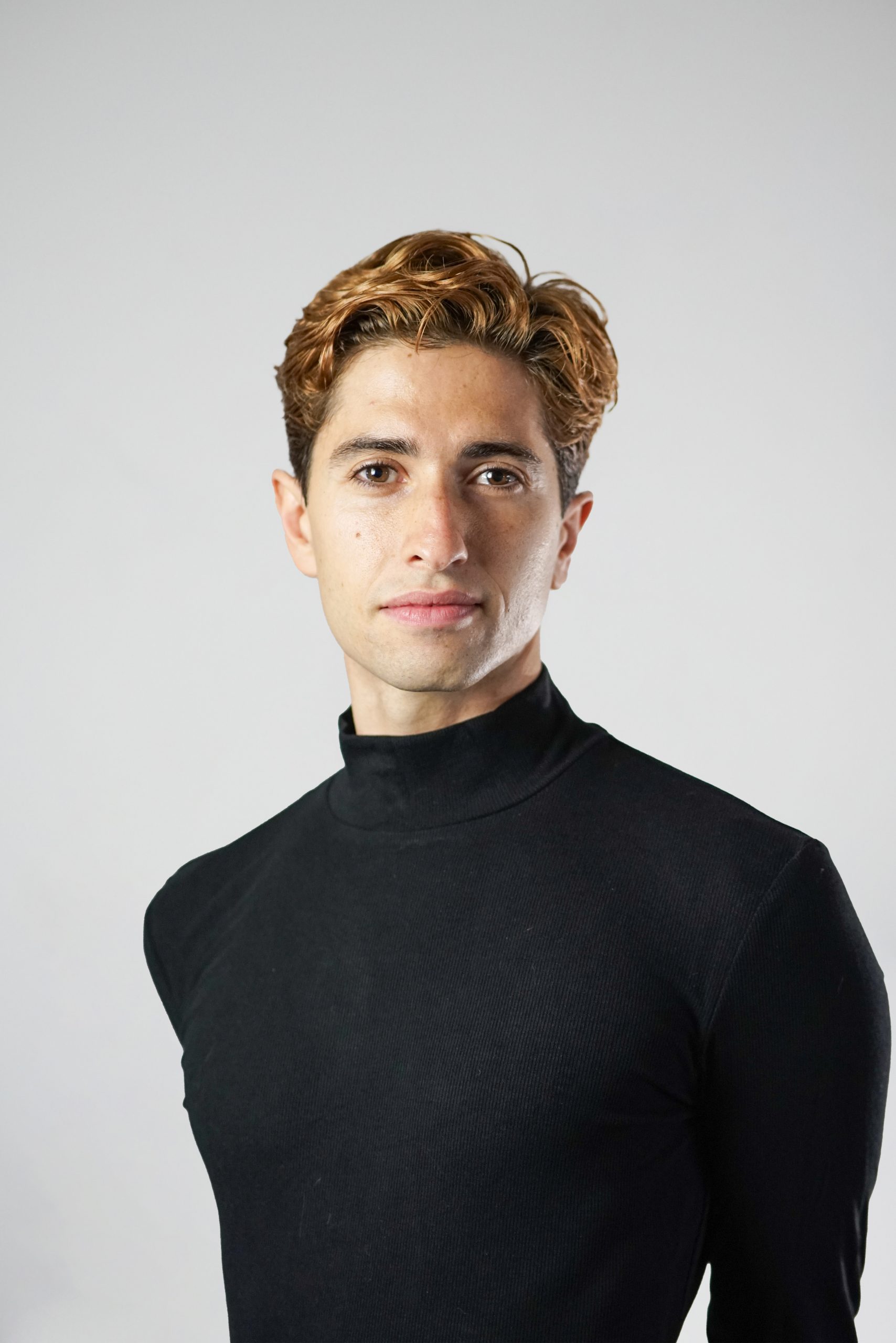Vincenzo Turiano
Born: 1993, Turin (Italy)
Education: Accademia Teatro alla Scala Ballet School, Milaan; Victor Ullate Ballet School, Madrid
Experience: Compañia Nacional de Danza, Madrid; Introdans (since August 2013)
Backstage is the place where the Italian-born dancer Vincenzo Turiano feels most at home. That’s not so surprising when you know that he has been living his life on and behind the stage since he was four years old. “It’s still a ritual for me. I walk round the rear of the stage and the wings before I have to make my entrance. It’s not a superstition, but it calms me down.”
Backstage is home
Calm isn’t the word you’d immediately associate with Vincenzo. Just sitting with him at a table already seems like dance. He moves in a free and graceful manner and emphasises almost all his words with movement. “It must be because I’m an Italian, right, we tend to talk with our hands.” Although Vincenzo grew up in Turin in the north of Italy, he feels himself to be a southern Italian. “My family originally came from the Naples region, but there was just too much poverty there and so my grandfather moved to the north, where there was more work.”
This same grandfather also revealed Vincenzo’s talent for dance in his earliest years. “My granddad was playing the piano and I began dancing around. My mother immediately saw that I was doing more than just rocking back and forth, and so she let me go to ballet class.” It was here that another side of the warm-hearted and happy young dancer showed itself. “I also like the discipline of the ballet training. I can remember being terribly upset because I had to go the lesson with the wrong kind of tights, and I sent my mother all over the city to find the right ballet shoes.”
La Bella Figura
At the age of fifteen Vincenzo switched from his dance education in Turin to the prestigious Accademia Teatro alla Scala, an in-school training programme. “My mother wasn’t happy at all. She felt amputated – her son suddenly leaving home. It’s not unusual for us Italians to stay living with mama for a really long time, but being admitted to the Milan school was my big dream.” According to Vincenzo, the Accademia is one of the top European schools, alongside the Royal Ballet School and the Opéra National de Paris. “Our school was a mix of French and Russian influences. I believe that then you get the best of both worlds. The elegance of the French school combined with the power of the Russians.”
And all this garnished with an Italian sauce. “La Bella Figura basically means that you always ensure you look your best when doing something. It’s an attitude that really benefits you as a dancer.” Vincenzo acquired ‘la bella figura’ quickly, and also of necessity. “I’m on the small side for a dancer. That’s a disadvantage when you do classical ballet, where uniformity is very important. My height has excluded me from certain paths, and nevertheless… it has also made me the dancer I am today.”
Vincenzo is known for his virtuosity, for his lyrical manner of performing. “Personally I think it’s really fantastic when I watch a dancer and forget where I am, and forget the stage too. When the movement affects you so deeply that you get sucked into the story. I try to achieve the same thing when I dance. There’s a saying: art imitates life. I think this is so true. When I have to dance a melancholy piece, for instance, then I imagine my mother’s face. For me, her face has something of a melancholy quality and I try to portray this.”
Observing people
In order to improve his skills in this area, Vincenzo has developed the habit of observing people on the major squares of Europe (in Milan or Madrid for instance). “A public square is a little like a stage. People make their entrance, meet someone, do something, move, act, and then they disappear again. I can watch that for hours. It helps me to find the right intention when I dance. That’s because a single movement can contain totally different intentions. You can be walking fast because you’re too late or because you can hardly wait to meet someone. You can see the difference.”
“If as a dancer you just perform the steps and the moves perfectly, then in my view you’re not an artist. In order to become an artist you need a certain vocabulary and in our case that’s actually an idiom without words. Dance only becomes genuine when you can give yourself to the moment and what you show is real, and you need a sense of feeling and empathy for that. Dance is good when it becomes storytelling. Or at least that’s my belief.”
Boundaries and discipline of ballet
Just like many other dancers, Vincenzo likes the boundaries and discipline of ballet. “You have to have a command of the instrument before you start to play it.” And that is also what immediately appealed to him at Introdans. The modern interpretation of the repertoire is nonetheless based on a firm classical foundation. “At that time I was dancing in Madrid but I knew I had a limited future there due to their strict view of how the corps de ballet should look. Someone there convinced me to send a video of myself to Roel (the artistic director of Introdans, ed.) and that’s what I did.” Simply on the basis of this video Vincenzo was offered a place at Introdans. “Now I’ve found my feet here. To begin with I found things difficult. I missed the sun and my family, but the repertoire, my colleagues, and Introdans itself are all so great that now I feel at home.”
